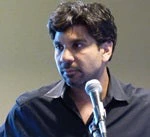We now know quite a lot about the supply of research on development, and about the part the World Bank plays. We know that the World Bank publishes a lot, that most research in the world is by researchers in high-income countries, and that were it not for the Bank there would be far fewer journal articles about developing countries.
We know much less about the demand for development research and Bank publications in particular. We know that Bank publications get cited a lot in scholarly journals, books, and technical reports. What we don’t know is: who is reading and citing the Bank’s work?
An optimist would argue that Bank authors get read largely by people in developing countries, and this in turn helps move policy forward. A cynic would argue that the audience for Bank publications is largely made up of others in the North working on international development. Bank reports that end up in developing countries are, according to this view, at risk of being turned into papier-mâche masks for puppet shows. We call this the "puppeteers view".
So, who’s right?
Some Facts
Sales data suggest the bulk of Bank books get sold in high-income countries. But our friends in the Bank’s publisher’s office warn us against reading too much into these numbers. They point out that sales are often registered to distributors who operate in multiple markets.
And Bank books and working papers are increasingly being made available electronically. The Bank’s e-Library is available on a subscription basis to libraries, and many publications can be viewed for free at Google Books or in “widget” form at ISSUU and Scribd. Many can be downloaded in PDF format for free from the Bank’s Documents and Reports website.
The latter channel may be the Bank’s best bet for reaching a developing-country audience, and this is the channel that seems to have the best geographic usage data at the moment. With these data, we can do a simple test to see whether the optimist or puppeteer is right: compare population and download numbers for each of four country groupings: low-income, lower-middle income, upper-middle income, and high income. The optimist would be hoping to see the high-income country grouping’s population share fall short of its download share.
We assembled the numbers for World Development Reports (aggregating downloads of the 2004 report on service delivery, and the 2006 report on equity and development) and Policy Research Working Papers produced by the human development team in the Bank’s Development Research Group (DECHD) (aggregating across 25 randomly-selected papers from the last 2½ years). We also looked at the location of visitors to the DECHD website to see whether our developing-country audience might be “just visiting”.
The results in the chart below will disappoint the optimist and delight the puppeteer. High-income countries account for just 17% of the world’s population but nearly 75% of WDR downloads. They also account for around 70% of working paper downloads and website visitors. The DECHD team’s working papers and website do a slightly better job than the WDR of reaching lower middle-income counties, but the difference is pretty small.

The Wrong Comparison?
The optimist might complain about our use of population shares as the comparator. The developing world has lower literacy rates, and even lower fractions of people with sufficient education to enable them to read a WDR. It also has fewer internet connections per 1000 population.
So, we also show on the chart the global distributions of university students, internet users, and people with high or advanced TIMMS math and science scores. (We applied TIMMS high/advanced rates among 15-year olds to the population as a whole, and assumed countries without TIMMS data had the same rates as others in the same income group.) On all these indicators, high-income countries account for less than 50% of the global total. These countries’ share of WDR downloads is almost 30 percentage points higher than their share of the world’s internet users.
So What?
So, it looks like the puppeteer is largely right. The high-income countries’ shares of WDR and working paper downloads are surely far higher than one would like.
This puppeteer’s viewpoint raises some questions, some rather awkward:
- Do other Northern institutions do better than the World Bank in reaching a developing-country audience? Or do all Northern authors end up writing for a largely Northern audience?
- If training and internet access aren’t binding constraints, why is the demand for Bank publications so heavily concentrated in high-income countries? Do developing country audiences think the Bank’s publications are irrelevant? Are there things that could be done to increase readership in the South?
- Does it make sense for the Bank and other Northern institutions to carry on producing knowledge about the South if the demand for the knowledge is located largely in the North? Or are there benefits to developing counties of the North’s publications (e.g. in policy making) that are being transmitted through channels that don’t entail in-country downloads?
- Do Bank researchers stand a better chance of connecting with developing-country audiences through a "wholesaling" approach, i.e. making tools available so as to facilitate "new learning in specific contexts"? Our chart shows that to date users of two of the Bank’s major analytic tools—ADePT and PovCalNet—as well as of LSMS household surveys also come largely from high-income countries. But challenges also lie ahead in increasing the use of Bank data in the developing world. Users of the World Development Indicators and viewers of the new Open Development webpage also speak with distinctly Northern accents.
- What then do the Bank and others need to do differently to "democratize development economics"?



Join the Conversation